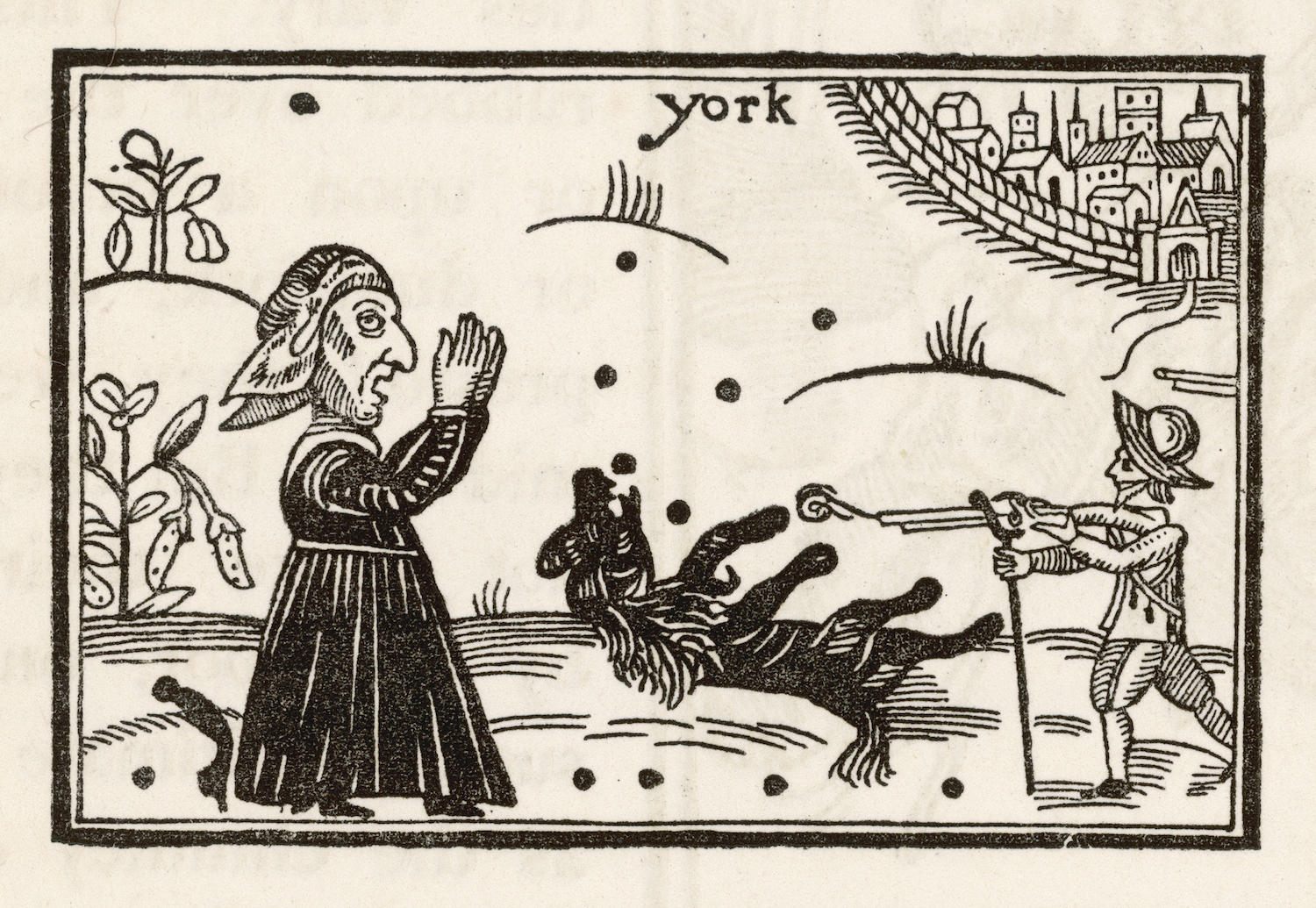375 Years Later, English Schoolchildren Still Learn About a Magic Propaganda Dog
Prince Rupert of the Rhine’s poodle, Boy, was said to be a witch, but it was all fake news.

During the English Civil War of the mid-1600s—the one that pitted the Royalists or “Cavaliers” against the “Roundhead” Parliamentarians—one of the most notable figures to emerge was Prince Rupert of the Rhine. A feared cavalry commander and nephew of King Charles I, Rupert became the figurehead of the Cavalier forces. Over the course of the war he gained a reputation for being such an unbeatable foe that he was accused of having supernatural powers.
He also had a white poodle named Boy, who for a time became almost as famous as Rupert himself. Boy was also thought to be a witch. But as one scholar tells it, that was all just a big joke.

“I said at the end of my book, all that we know about this dog, we can write on the back of a beer mat. Which is true,” says Mark Stoyle, a professor of early modern history at the University of Southampton and author of The Black Legend of Prince Rupert’s Dog: Witchcraft and Propaganda During the English Civil War. In terms of hard facts about Boy, it turns out we only have a few.
According to Stoyle, we know that Rupert received Boy as a sort of get-well gift while he was imprisoned in Austria. Boy came back to England with Rupert, and there is an account of Rupert and Boy going on a hunt. “They go hunting, and he takes down a deer, and the dog pulls it down. So, we know it’s a hunting dog,” says Stoyle. The only other real facts are about the animal’s death at the Battle of Marston Moor in 1644, where the dog was killed. We know this because his death was celebrated by Roundheads in a pamphlet entitled, Dog’s Elegy or Rupert’s Tears.
As for the propaganda regarding the dog, it likely began with the Royalist poet John Cleveland’s satirical verse “To Prince Rupert,” in which Boy is said to have learned to pee at the mention of the Parliamentarian leader, among other outlandish tricks. Not long after Cleveland’s missive was published, Boy was swept up in the wider rumors of witchcraft that swirled around Rupert. “It was just a little throw away joke, but it seems to have become quite popular,” says Stoyle. “Then someone went on to write a whole [pamphlet] suggesting that the Parliamentarians believe that the dog is a witch.”
This 1643 pamphlet, titled Observations Upon Prince Rupert’s White Dog Called Boy, promoted the story that Boy was capable of all sorts of occult feats including speaking multiple languages; being able to make Rupert bullet-proof and invisible; and having the gift of prophecy. According to Stoyle, this too was a joke. “It was fake news! It was a pamphlet written by a Royalist, pretending to be a Parliamentarian, in order to poke as much fun as possible at Roundheads for believing in ‘witches under the bed,’ if you like,” says Stoyle.

Whatever the intent, rumors about Boy’s magical powers began to spread as fact among the common folk, including Royalists and the very Parliamentarians the rumors were originally intended to mock. The mind reels. “I would say that 95 percent of English people really believed in witchcraft,” says Stoyle. “It is a joke that appeals to quite a small strata of people on the Royalist side, who don’t take witchcraft seriously. If you can imagine all these ordinary people out there on the streets, this joke almost goes over their head.”
What had started as satirical propaganda on the part of the Royalists had backfired. Boy gained a reputation as Rupert’s supernatural familiar, and there was even an implication that the dog would shape-shift into a beautiful woman and sleep with Rupert. This association with witchcraft lent credence to some of the Parliamentarians’ anti-Royalist sentiment. “The trouble is that if lots of ordinary people start to believe that the king is surrounded by witches, that there really are witches in the king’s camp, this gets out of control,” says Stoyle. And since the entire story became so unsavory in the popular consciousness, most of the high-minded Royalists wouldn’t deign to touch it, so no corrective messaging seems to have been attempted.
The twists of meaning, intent, and reality among the stories of Boy can be somewhat convoluted, but the story came to an abrupt end at Marston Moor, where Boy was killed after Rupert brought him into battle. It’s not clear what became of Boy’s body, although Stoyle suggests that if the Parliamentarian soldiers knew who the dog was when they killed him, they would have wanted to have a grim trophy of their conquest. “He’s the most famous dog in England at this stage.”
Today, the mysterious poodle’s story still sticks in the minds of many English school children. “It’s an easy takeaway fact that almost everyone knows,” says Stoyle. “But they all think we’ve got lots of hard evidence, and all we’ve got are fragments of evidence and a propagandist campaign about the dog.” Fake news indeed.























Follow us on Twitter to get the latest on the world's hidden wonders.
Like us on Facebook to get the latest on the world's hidden wonders.
Follow us on Twitter Like us on Facebook